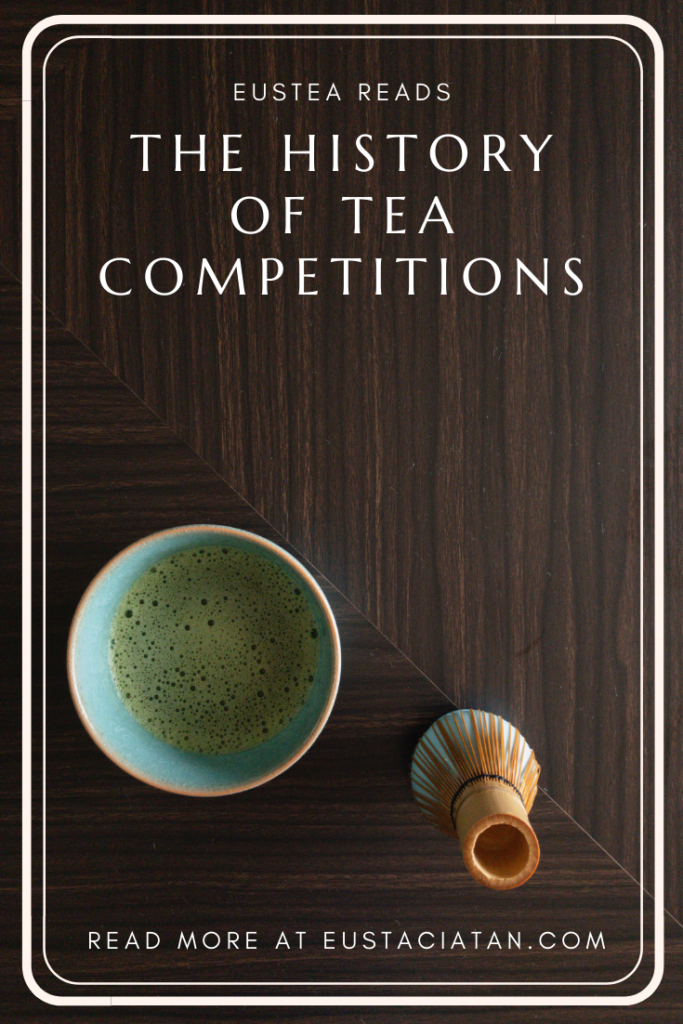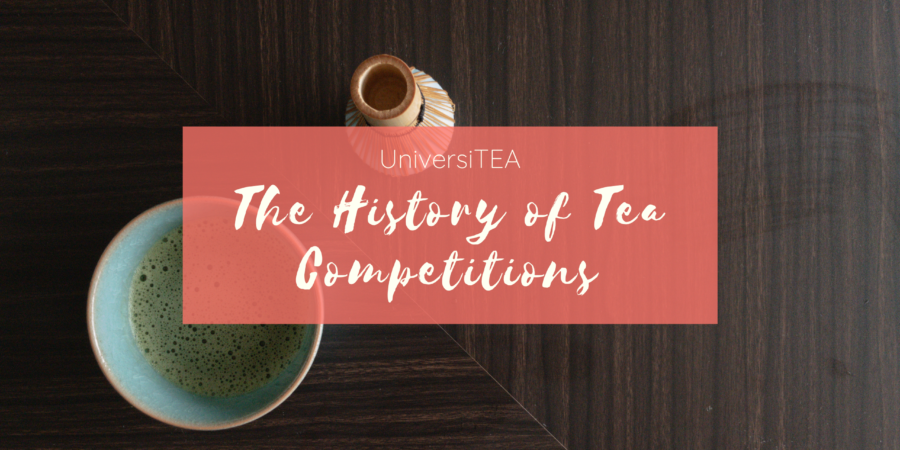You might have heard of modern day tea competitions like the Global Tea Championships, Australian Tea Masters, or perhaps Great Taste Awards (okay that may be stretching it), where either teas or tea professionals are judged. But do you know that tea competitions have a very long history?
I’ve been reading about the competitions in various books, so for this post, I thought it would be fun to talk about tea competitions in China and Japan.
China
Doucha (斗茶)
In China, tea competitions are said to have started at the end of the Tang Dynasty and became incredibly popular in the Song dynasty (10th to mid-13th century). Modern tea competitions resemble Song dynasty tea competitions, which are known as doucha (斗茶), as the emphasis is on judging the quality of the tea. This is done through two criteria: judging the tea liquor’s colour (汤色) and the tea’s foam (汤花). Yes, foam. Back then, tea would have been ground before being made (this is where matcha comes from), so there would have been a foam for them to evaluate.
If you’ve not read The Rise of Tea Culture In China by Bret Hinsch, he makes a very interesting point that by “participating in this contest, and performing the ceremony correctly,” a man proved his “acceptance as an honorable member of the cultural elite.” In other words, it’s not the winning or losing – it’s the fact that you know how to play the game that’s what’s important.
Chabaixi (茶百戏)
Chabaixi, also known as Tangxi (汤戏) and Fencha (分茶), is a game that started in the Tang dynasty. It’s not about evaluating the tea, but rather about drawing pictures in the tea. This basically combines Chinese tea with Chinese art.
Japan
Tocha (闘茶)
In Japan, the tea competition is called Tocha (闘茶)and it dates back to the Nanboku period (南北朝期), placing it in the 14th century. It’s very similar to the tea competitions in China, but the emphasis is on tasting various types of tea and determining which is honcha (本茶 aka true tea) and which is hicha (非茶 aka fake tea).
That may sound simple because if you drink tea regularly, you’d know a tea from a tisane, but the trick lies in the definition. In the beginning, honcha refers to tea from the tea plants planted by seeds brought over by Yosai/Eisai (栄西), located in Togano. After a while, the definition of Honcha shifted from tea from Togano to tea from Uji, as the Uji farms began to gain prominence. But in any case, you’d have green tea from all around Japan, and you’re expected to figure out which is from a particular region. Honestly, I don’t think I could do that.
In terms of modern day tocha, I’ve heard from a professor who, instead of differentiating from honcha and hicha, turned the goal into differentiating between different types of cultivars! This twist on the game really appeals to me because we can get good tea from all around Japan, so it’s less about elevating one place but celebrating the nuances between the cultivars.
As you can expect, these competitions soon led to tea gatherings. There were different types of tea gatherings, like the Basara (婆娑羅)-style which captured the spirit of the period, and the Chayoriai (茶寄合)-style.
Shirokubo no Ochako (白久保のお茶講)
Today, there’s a village in Gunma prefecture called Nakanojo (中之条町) which has an annual event very similar to Tocha! It’s called: 白久保のお茶講 (Shirokubo no Ochako) Apparently, Chenpi, Sencha, Amacha (甘茶) are ground into powder and mixed in varying proportions, forming 「一ノ茶」(first tea),「二ノ茶」(second tea),「三ノ茶」(third tea),「客」( guest). As this is a religious ceremony, the tea is offered to 天神様 and the participants drink a sample tea (見本茶) called 「とよみ」. After that, participants are expected to drink the tea and guess which is which!
While there are similarities between Shirokubo no Ochako and Tocha, there are also enough differences that make it clear it’s a different type of competition. There’s also a bit of a mystery – no one knows why this competition is held in only one village!
Conclusion & Bibliography
I hope you found this as interesting as I did! I don’t know why, but I didn’t really think of tea competitions having such a long history until I started learning about the history of tea. As you can tell, I’ve mainly focused on China and Japan in this post, so if you have information about the history of tea competitions in other countries, I’d love to hear about it!
If you’re interested in learning more, the following are great resources and are where I got my information:
- The Tale of Tea by George van Driem (my review of the book) – I received lots of information for this!
- The Rise of Tea Culture in China by Bret Hinsch (my review of the book) – great if you want to learn more about tea in China.
- This paper from Ocha festival on tea drinking in the Song dynasty was also very interesting.
- Baidu entry for tea competitions (page in Chinese) – honestly, if you want to learn about tea in China, I find the Baidu entries to be a great launching point.
- 日本茶インストラクター講座I – my current textbook!
- For a detailed explanation of Shirokubo no Ochako, I referenced this page from JTCO (page in Japanese)


Fascinating! Very educational. Reminds me of the way that in Europe, cheeses and wines were distinct to different regions and knowing your way around wines was a mark of being cultured.
I hadn’t realised that similarity! Yes, it’s pretty similar in that way!
Okay you know I have literally no knowledge on this so it was so so interesting to read about!!
I’m glad you found it interesting!
Always!